The London Regiment was an infantry regiment in the British Army, part of the Territorial Force. The regiment saw distinguished service in the First World War and was disbanded in 1938, shortly before the Second World War, when most of its battalions were converted to other roles or transferred elsewhere. The lineage of some of its former battalions is continued by the current regiment of the same name.

The Queen's Royal Surrey Regiment was a line infantry regiment of the British Army which existed from 1959 to 1966. In 1966, it was amalgamated with the Queen's Own Buffs, The Royal Kent Regiment, the Royal Sussex Regiment and the Middlesex Regiment to form the Queen's Regiment, which later merged with the Royal Hampshire Regiment in September 1992 to form the Princess of Wales's Royal Regiment.

The Queen's Westminsters were an infantry regiment of the Territorial Army, part of the British Army. Originally formed from Rifle Volunteer Corps, which were established after a French invasion scare of 1859. The unit became part of the newly established London Regiment on the formation of the Territorial Force in 1908. It was subsequently amalgamated in 1921 with the Civil Service Rifles, and became a territorial Battalion of the King's Royal Rifle Corps in 1937. It ceased to exist as separate entity after it was amalgamated in 1961.
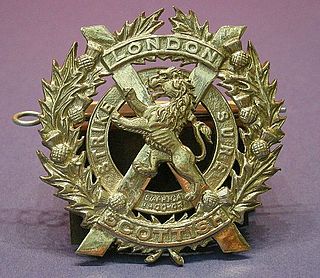
The London Scottish was a reserve infantry regiment then a company of the British Army. In its final incarnation it was A Company, the London Regiment until, on 1 May 2022, soldiers in the company transferred to foot guards regiments and the company became G (Messines) Company, Scots Guards, 1st Battalion London Guards.
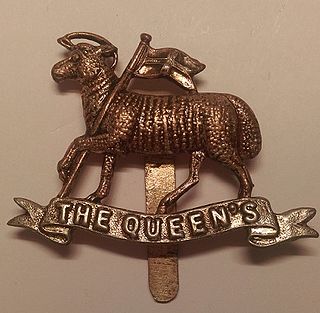
The Queen's Royal Regiment was a line infantry regiment of the English and later the British Army from 1661 to 1959. It was the senior English line infantry regiment of the British Army, behind only the Royal Scots in the British Army line infantry order of precedence.

The Essex Yeomanry was a Reserve unit of the British Army that originated in 1797 as local Yeomanry Cavalry Troops in Essex. Reformed after the experience gained in the Second Boer War, it saw active service as cavalry in World War I and as artillery in World War II. Its lineage is maintained by 36 Signal Squadron, part of 71 (Yeomanry) Signal Regiment, Royal Corps of Signals.
The 131st Infantry Brigade, originally the Surrey Brigade was an infantry formation of Britain's Territorial Army that saw service during both the First and the Second World Wars. In the First World War the brigade was in British India for most of the war and did not see service as a complete unit but many of its battalions would see service in the Middle East.

The East Surrey Regiment was a line infantry regiment of the British Army in existence from 1881 until 1959. The regiment was formed in 1881 under the Childers Reforms by the amalgamation of the 31st (Huntingdonshire) Regiment of Foot, the 70th (Surrey) Regiment of Foot, the 1st Royal Surrey Militia and the 3rd Royal Surrey Militia.

Fulham House is a military installation at 87 Fulham High Street, Fulham, London. It is a Grade II listed building.
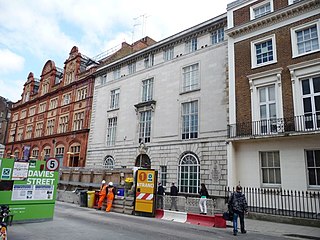
The Davies Street drill hall is a former military installation in Davies Street, London.
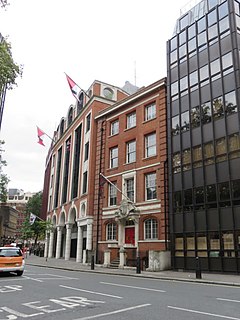
The Buckingham Gate drill halls were military installations at 58 and 59 Buckingham Gate, London.

Blackheath drill hall is a military installation at Blackheath in London.
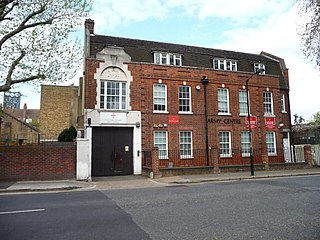
The Braganza Street drill hall is a military installation in Braganza Street, Walworth.

The Mitcham Road Barracks is an Army Reserve centre in Croydon, London, with a history dating back to 1794.

Londesborough Barracks is a military installation in Kingston upon Hull, England.

Stockport Armoury is a military installation in Stockport, Greater Manchester, England. It is a Grade II listed building.

The St Paul's Street drill hall is a military installation in Huddersfield, West Yorkshire. It is a Grade II listed building.
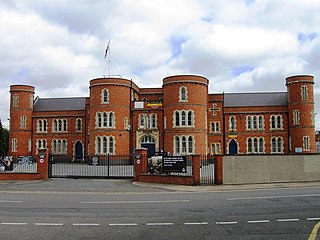
The Clare Street drill hall is a military installation in Northampton, Northamptonshire. It is a Grade II listed building.
The 4th Battalion, Queen's Royal Regiment was a volunteer unit of the British Army from 1859 to 1961. Beginning from small independent units recruited in the South London suburbs, it was attached to the Queen's Royal Regiment and served in the Second Boer War, World War I and Third Anglo-Afghan War. Before World War II it was converted into a Royal Artillery searchlight regiment that served in the Battle of Britain and The Blitz. Later it became a light anti-aircraft gun unit serving on blockships in the Mulberry harbour during the Normandy invasion, and then defended the port of Antwerp in the closing stages of the war. Postwar it continued in the air defence role before rejoining the Queen's Regiment as infantry.

23rd Battalion, London Regiment was a battalion of the London Regiment (1908-1938), based at the St John's Hill Drill Hall in Lavender Hill, south London. It served as a Tank Regiment during the Second World War, but reverted to Infantry in the Territorial Army in 1956, when it became a Territorial Battalion of the East Surrey Regiment. In 1961 it was amalgamated to form the 4th (Territorial) Battalion of the Queen's Royal Surrey Regiment.


















